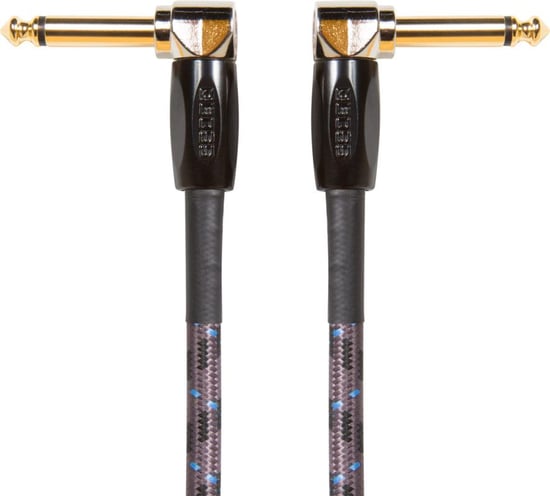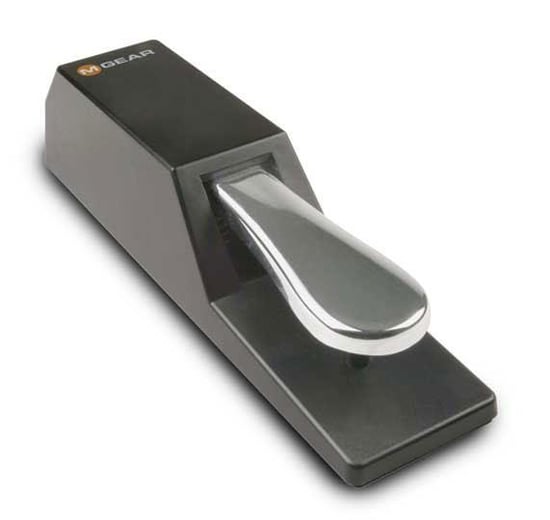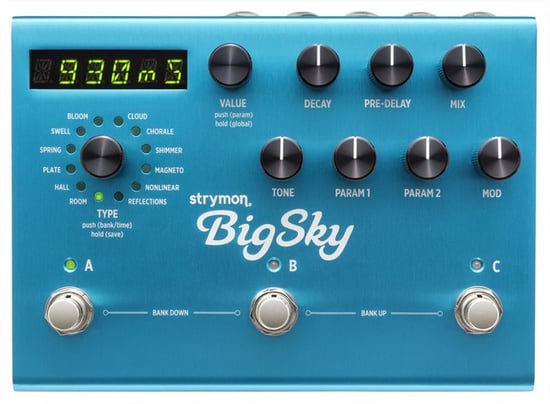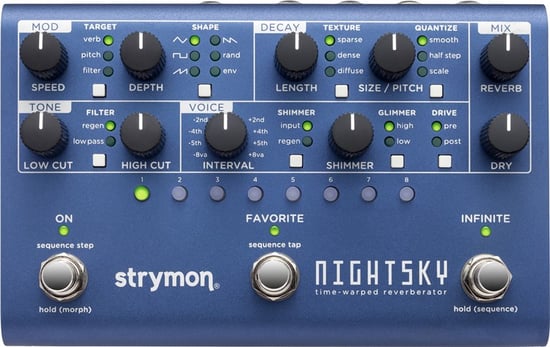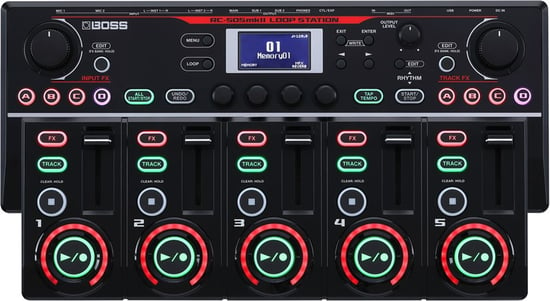RME Fireface UCX II USB Audio Interface Overview
The Fireface UCX II is a deeply integrated pro audio device for studio and live use in an incredibly compact unit. It follows RME’s longstanding history of creating tiny powerful interfaces, putting what would normally be spread out over two or three 19-inch panels into a half-rack size unit.
The audio system of the Fireface UCX II directly sends analogue and digital audio data to Windows and Mac PCs. Even for unskilled users, the newest Plug & Play technology ensures an easy installation. The Fireface UCX II operates quickly, comfortably, and efficiently thanks to several unique features such as a well-thought-out Settings dialogue and an integrated routing solution.
On the front panel of the Fireface UCX II, there are two XLR combo mic/line preamps, two digitally controlled line/instrument inputs, the primary volume knob, a display, a headphone jack, and numerous control buttons. There are ten analogue balanced line inputs and outputs on the back, as well as MIDI, ADAT, AES/EBU, and SPDIF I/O, USB 2.0, and a switchable word clock I/O.
The Fireface UCX II has RME’s newest clock and jitter rejection technology, the SteadyClock FS. It is based on a femtosecond clock and decreases intrinsic jitter while converting from and to analogue across all digital formats.
To provide quick, immediate access to all functionalities, you can control all device states straight from the front panel. You can quickly modify and adjust device settings using the colour display with a well-designed menu and four keys and the encoder. Internal memory lets you permanently store six different unit states. The Fireface UCX II can run on its own without being connected to a PC, and when used on its own, it can be changed into different devices by just clicking a button.
DURec is an integrated digital recorder for all inputs and outputs directly to USB memory through the rear USB port and lets you record on USB thumb drives or hard drives up to 2TB. The recording feature is provided by the inbuilt DSP and works standalone. The USB connector can also be utilised for the RME optional USB remote control.
The Direct USB recording turns the Fireface UCX II into a stand-alone field recorder, for example for virtual sound checks, into a live multi-channel player. You can record rehearsals, live performances, and jams without a computer or software. For recording and playback, all input and output channels can be selected separately.
Fireface UCX II comes with extensive routing and monitoring options for the TotalMix FX DSP Mixer and a DIGICheck Analyzer that lets the digital data feed be measured and analysed with utmost precision. TotalMix FX can substitute external mixers, so you can create many latency-free monitor mixes with Reverb, Dynamics, Delay and EQ for all outputs, including main monitors, and headphone mixes.
The extra TotalMix Remote is a TotalMix FX remote controller to operate the hardware mixer and audio effects of RME audio interfaces. TotalMix Remote mimics the host system in the current state on iPad and Windows/Mac PCs — the full mixing state, the whole routing process, including FX configurations, up to the level meters and all in real-time. Change the mixer and FX settings easily through Ethernet and WiFi.
Fireface UCX II can operate in two different modes - driver-based USB2 and Class Compliant. Since 2001 TotalMix has brought unlimited routing and mixing to RME’s audio interfaces and is able to create as many independent submixes as there are output channels available, turning it into the most flexible and powerful mixer of its kind.
- Analog
- AD, Line In 5-8, rear
- Resolution AD: 24 bit
- Signal to Noise ratio (SNR): 112 dB RMS unweighted, 115 dBA
- Frequency response @ 44.1 kHz, -0.1 dB: 5 Hz – 20.8 kHz
- Frequency response @ 96 kHz, -0.5 dB: 3 Hz – 45.8 kHz
- Frequency response @ 192 kHz, -1 dB: 2 Hz – 92 kHz
- THD: < -110 dB, < 0.00032 %
- THD+N: < -104 dB, < 0.00063 %
- Channel separation: > 110 dB
- Input: 6.3 mm TRS jack, electronically balanced
- Input impedance: 8 kOhm unbalanced, 12 kOhm balanced
- Input sensitivity switchable to +19 dBu and +13 dBu
- Variable gain: 0 to +12 dB
- Minimum level for 0 dBFS: +1 dBu, -1.2 dBV
- Line In 3-4, front
- As AD, but:
- Additional Gain stage: 0 up to +12 dB
- Maximum input level, +19 dBu, Gain 0 dB: Line +19 dBu, Inst +13 dBu
- Maximum input level, +13 dBu, Gain 12 dB: Line +1 dBu, Inst -5 dBu
- Input impedance: Instrument 1 MOhm. Line 13 kOhm balanced, 9 kOhm unbalanced
- Input Gain Inst: +6 dB
- Input mode: Line balanced (TRS), Inst unbalanced (TS)
- Microphone In 1-2, front
- As AD, but:
- Input: XLR, electronically balanced
- Input impedance: 5.4 kOhm
- Gain range: 75 dB
- Maximum input level, Gain 0 dB: +18 dBu
- Maximum input level, Gain 75 dB: -57 dBu
- EIN: -128 dBu A-weighted, 60 dB gain,150 Ohm, 20 Hz – 20 kHz
- Line In 1-2
- As AD, but:
- Input: TRS, electronically balanced
- Input impedance: 10 kOhm balanced, 5 kOhm unbalanced
- Maximum input level, Gain 0 dB: +24 dBu
- Maximum input level, Gain 75 dB: -51 dBu
- DA, Line Out 1-6, rear
- Resolution: 24 bit
- Dynamic range (DR): 112 dB RMS unweighted, 115 dBA
- Frequency response @ 44.1 kHz, -0.5 dB: 5 Hz – 20.8 kHz
- Frequency response @ 96 kHz, -0.5 dB: 5 Hz – 45 kHz
- Frequency response @ 192 kHz, -1 dB: 5 Hz - 89 kHz
- THD: < -108 dB, < 0.0004 %
- THD+N: < -104 dB, < 0.00063 %
- Channel separation: > 110 dB
- Maximum output level: +19 dBu
- Output: 6.3 mm TRS jack, servo-balanced
- Output impedance: 75 Ohm
- Output level switchable +19 dBu, +13 dBu, +4 dBu
- DA - Stereo Monitor Output Phones (7-8)
- As DA, but:
- Output: 6.3 mm TRS stereo jack, unbalanced
- Maximum output level at 0 dBFS, High: +19 dBu
- Maximum output level at 0 dBFS, Low: +4 dBu
- Output impedance: 1 Ohm
- Max power per channel @ 32 Ohm load, 0.1% THD: 210 mW (2.6 Vrms, +10.5 dBu)
- MIDI
- 1 x MIDI I/O via 5-pin DIN jacks
- Galvanically isolated by optocoupled input
- Hi-speed mode: Jitter and response time typically below 1 ms
- Separate 128 byte FIFOs for input and output
- Digital
- Clocks: Internal, ADAT, AES, SPDIF, word clock
- Jitter suppression of external clocks: > 50 dB (2.4 kHz)
- Effective clock jitter influence on AD and DA conversion: near zero
- PLL ensures zero dropout, even at more than 100 ns jitter
- Digital Bitclock PLL for trouble-free varispeed ADAT operation
- Supported sample rates: 28 kHz up to 200 kHz
- Digital Inputs
- AES/EBU
- 1 x XLR, transformer-balanced, galvanically isolated, according to AES3-1992
- High-sensitivity input stage (< 0.3 Vpp)
- SPDIF compatible (IEC 60958)
- Accepts Consumer and Professional format
- Lock range: 27 kHz – 200 kHz
- Jitter suppression: > 50 dB (2.4 kHz)
- SPDIF coaxial
- 1 x RCA, according to IEC 60958
- High-sensitivity input stage (< 0.3 Vpp)
- Accepts Consumer and Professional format, copy protection will be ignored
- Lock Range: 27 kHz – 200 kHz
- Jitter suppression: > 50 dB (2.4 kHz)
- ADAT Optical
- 1 x TOSLINK, format according to Alesis specification
- Standard: 8 channels 24 bit, up to 48 kHz
- Double Speed (S/MUX): 4 channels 24 bit 96 kHz
- Quad Speed (S/MUX4): 2 channels 24 bit 192 kHz
- Bitclock PLL ensures perfect synchronisation even in varispeed operation
- Lock range: 31.5 kHz – 50 kHz
- Jitter suppression: > 50 dB (2.4 kHz)
- SPDIF compatible (automatic detection)
- Word Clock
- BNC
- Internal termination 75 Ohm switchable
- Automatic Double/Quad Speed detection and internal conversion to Single Speed
- SteadyClock guarantees super low jitter synchronization even in varispeed operation
- Not affected by DC-offsets within the network
- Signal Adaptation Circuit: signal refresh through auto-center and hysteresis
- Overvoltage protection
- Level range: 1.0 Vpp – 5.6 Vpp
- Lock Range: 27 kHz – 200 kHz
- Jitter suppression: > 50 dB (2.4 kHz)
- Digital Outputs
- AES/EBU
- XLR, transformer-balanced, galvanically isolated, according to AES3-1992
- Output level Professional 4.5 Vpp, Consumer 2.6 Vpp
- Format Professional according to AES3-1992 Amendment 4
- Format Consumer (SPDIF) according to IEC 60958
- Single Wire mode, sample rate 28 kHz up to 200 kHz
- SPDIF coaxial
- 1 x RCA, according to IEC 60958
- Output level Professional 1.2 Vpp, Consumer 0.6 Vpp
- Format Professional according to AES3-1992 Amendment 4
- Format Consumer (SPDIF) according to IEC 60958
- Single Wire mode, sample rate 28 kHz up to 200 kHz
- ADAT
- 1 x TOSLINK, format according to Alesis specification
- Standard: 8 channels 24 bit, up to 48 kHz
- Double Speed (S/MUX): 4 channels 24 bit 96 kHz
- Quad Speed (S/MUX4): 2 channels 24 bit 192 kHz
- Word Clock
- BNC
- Max. output voltage: 5 Vpp
- Output voltage @ 75 Ohm termination: 4.0 Vpp
- Output impedance: 10 Ohm
- Frequency range: 27 kHz – 200 kHz
- General
- Power supply: external power supply
- Typical power consumption: 13 Watts
- Current at 12 Volt operating voltage: 910 mA (11 Watts)
- Dimensions incl. rack ears, full depth (WxHxD): 265 x 44 x 155 mm (10.5" x 1.73" x 6.1")
- Dimensions without rack ears, body depth (WxHxD): 215 x 44 x 130 mm (8.5" x 1.73" x 5.1")
- Weight: 910 g ( 2.0 lbs)
- Temperature range: +5° up to +50° Celsius (41° F up to 122°F)
- Relative humidity: < 75%, non condensing









